![]()
![]()
![]()
Use LEFT and RIGHT arrow keys to navigate between flashcards;
Use UP and DOWN arrow keys to flip the card;
H to show hint;
A reads text to speech;
226 Cards in this Set
- Front
- Back
|
Physics |
Experimental science concerned with basic principles of universe |
|
|
Elements of Physics |
Energy, Water, Matter, Space, Time |
|
|
Science |
Systematized knowledge from observation, study & facts |
|
|
"ta physika" |
Greek word which literally means natural things |
|
|
Mechanics |
classical branch of physics that deals with inertia, motion, forces and energy |
|
|
Thermodynamics |
classical branch of physics that deals with heat flow, transformations and temperature |
|
|
Electromagnetism |
classical branch of physics that deals with electric charge, current and magnetism |
|
|
Optics |
classical branch of physics that deals with nature and propagation of light
|
|
|
Modern Branches |
1. Relativity 2. Quantum Mechanics 3. Nuclear Physics 4. Astrophysics |
|
|
Describing Physical Phenomenon |
ability to define and measure as requisite of science |
|
|
Measurement |
describing physical phenomenon that deals with comparison of unknown quantity, assigned while considering a specific parameter, relative to a standard |
|
|
Fundamental Quantities |
quantities that can exist by themselves Ex. time, length, mass |
|
|
Derived Quantities |
quantities that are dependent on other quantities Ex. velocity, volume |
|
|
Scalar |
types of physical quantities that involves only of magnitude |
|
|
Vector |
types of physical quantities that involves magnitude and direction |
|
|
Standards |
reference from which you will compare physical quantity of interest wherein in units are used |
|
|
System of Units |
choice of standards for fundamental quantities which is also known as MKS system *MKS - meter, kilogram, second |
|
|
UNITS meter kilogram second ampere Kelvin meter candela |
MEASURED length mass time electric current temperature amount of distance luminous intensity |
|
|
Dimensional Analysis |
dimension denoting physical nature of quantity which checks correctness of equation, and in which they are treated as algebraic quantities |
|
|
Conversions |
inconsistent units are transformed to appropriate units wherein they are treated as algebraic quantities to cancel out |
|
|
Axial Notation |
way of writing vectors wherein magnitude and angle formed with x-axis is created regular coordinate system is used |
|
|
NEWS Notation |
way of writing vectors wherein magnitude and appropriate directions based on NEWS configuration are used geographic reference frame |
|
|
Equality of Two Vectors |
Two vectors are equal if they have same magnitude & direction (Property of Vectors) |
|
|
Movement of Vectors in Diagram |
Any vector can be moved parallel to itself without being affected which means same vector even if moved (Property of Vectors) |
|
|
Negative Vectors |
two vectors are negative if they have the same magnitude bu are 180 degrees apart (Property of Vectors) |
|
|
Resultant Vectors |
sum of given set of vectors result to adding two or more together which results to vector R (Property of Vectors) |
|
|
Addition of Vectors |
directions of vectors must be considered and units must be the same |
|
|
Parallelogram Method |
graphical technique which is most applicable for two vectors 1. draw 2 vectors 2. construct parallelogram 3. construct line bisecting the parallelogram |
|
|
Polygon Method |
graphical technique for three or more vectors |
|
|
Component Method
|
analytical method in which components, projection of vector to x & y axis, are used |
|
|
Ax = Acosθ |
formula of the x-component of vector projected along the x-axis |
|
|
Ay = Asinθ |
formula of the y-component of vector projected along the y-axis |
|
|
X ad Y Components Formula |
A = Ax + Ay |
|
|
TRUE |
x and y component are the legs of the right triangle whose hypotenuse is A |
|
|
TRUE |
components can be positive or negative and will have same units as original vector
|
|
|
Addition of Vectors Algebraically |
1. Choose a coordinate system & sketch vector 2. Find x & y components of all vectors 3. Add all x-components 4. Add all y-components 5. Use Pythagorean Theorem to find magnitude of R 6. Use of inverse tangent function to find direction of R |
|
|
Natural and Violent Motion |
two types of motion that Aristotle stated in attempt to clarify motion by classification |
|
|
Natural Motion |
motion is based on nature of objects "objects were thought to fall at speeds proportional to their weights" |
|
|
Violent Motion
|
motion resulted from pushing and pulling
"all motion resulted from either nature of the moving object or sustained push or pull: |
|
|
Galileo Galilee |
stated that time is an important factor in describing motion
|
|
|
Isaac Newton |
stated the Three Laws of Motion
|
|
|
Mechanics |
involves the motion on object and the relationship with motion and other concepts of physics |
|
|
Kinematics |
mechanics that involves the description of motion |
|
|
Dynamics |
mechanics that involves the causes of motion |
|
|
One-Dimensional Motion |
motion that is described along a straight line considering objects to travel along a flat and narrow straight line *anything considered as particle |
|
|
Distance |
kinematic concept that is a scalar quantity which describes the total length traveled "How much space an object has covered?" |
|
|
Displacement |
kinematic concept that is a vector quantity which describes the shortest path from one point to another "How far out an object is?" |
|
|
Distance; Displacement |
__________ may be but not necessarily the magnitude of the _________. |
|
|
FALSE |
Displacement is greater than or equal to Distance |
|
|
Position-Time Graphs |
graph that is not necessarily a straight line even though motion is along the x-direction
|
|
|
Speed |
kinematic concept that is a scalar quantity that is described as the total distance over the total time "How fast an object is moving?" |
|
|
Velocity |
kinematic quantity that is described as the rate an object changes its position or total displacement over total time |
|
|
Average Velocity |
determined from a position-time graph which is equal to the slope of the line joining the initial and final positions |
|
|
Instantaneous Velocity |
indicates what is happening at every point of time and is the slope of the tangent line to the curve of time of interest |
|
|
Instantaneous Speed |
magnitude of the instantaneous velocity |
|
|
Uniform Velocity |
define as the constant velocity wherein the instantaneous velocity are always the same |
|
|
Acceleration |
kinematic concept which is a vector quantity which is the rate an object changes its velocity |
|
|
Types of Acceleration |
1. Increasing Speed 2. Decreasing Speed 3. Constant speed, changing direction (Curved) |
|
|
FALSE |
Acceleration is related with moving fast |
|
|
Slowing Down |
acceleration in opposite direction of motion |
|
|
Constant Velocity |
acceleration is zero velocity (magnitude & direction) is not changing with time |
|
|
Speed Increasing |
sign of velocity and acceleration are the same
|
|
|
Speed Decreasing |
sign of velocity and acceleration are opposite |
|
|
Instantaneous Acceleration |
slope of the tangent line to the curve of the Velocity-Time Graph described as limit of average acceleration as time interval goes to zero |
|
|
Instantaneous accelerations are always the same |
happens when acceleration is uniform and the instantaneous will always be equal to average |
|
|
Average Acceleration |
slope of the line connecting initial and final velocities on Velocity-Time Graph |
|
|
Constant Acceleration |
acceleration (magnitude & direction) is not changing with time non-zero acceleration |
|
|
Free Fall |
movement along y-axis with the assumption that no force is affecting the fall of any object |
|
|
Air Resistance negligible |
moving freely under the influence of gravity |
|
|
Constant Acceleration |
Condition when all objects are falling near the earth's surface |
|
|
Gravity at Sea Level |
9.8 m/s^2 |
|
|
TRUE |
acceleration is independent of the object's characteristics (mass, density or shape)
(T or F) |
|
|
Value of gravity |
value varies slightly with latitude and elevation |
|
|
Negative gravity |
acceleration of free fall since it moves downward on y-axis |
|
|
Object dropped |
- initial velocity is zero - up is positive & down is negative |
|
|
Object thrown downward |
- acceleration is gravity - acceleration (gravity) is negative - initial velocity is not equal to zero |
|
|
Object thrown upward |
- initial velocity is upward (positive)
- instantaneous velocity at maximum height is zero - acceleration is gravity |
|
|
Symmetrical Motion |
object falls where it is thrown Final velocity = Initial velocity |
|
|
Asymmetrical Motion |
object does not fall to where it was thrown either by disrupting the path solved by dividing motion into segments |
|
|
Two-Dimensional Motion |
motions including projectile, circular and relative |
|
|
Projectile Motion |
anybody that is given an initial velocity and the follows a path determined entirely by effect of gravity which can be assessed by point particle |
|
|
Projectile |
object being launched or projected |
|
|
Trajectory |
parabolic path traveled by projectile motion |
|
|
Range |
horizontal displacement of projectile motion |
|
|
Assumptions on Projectile Motion |
1. Free fall acceleration (g) is constant over the range of motion and is directed downward 2. Air Resistance is negligible 3. Combination of accelerated motion and free fall |
|
|
Horizontal component |
Its velocity is same all throughout the path of projectile |
|
|
Vertical Component |
only velocity that changes in a projectile |
|
|
Top of Trajectory |
the velocity only consist of horizontal velocity & vertical component vanishes to zero
|
|
|
Maximum Projectile Range |
achieved when an object is launched at angle of 45 degrees |
|
|
FALSE |
horizontal and vertical motions are independent of each other |
|
|
Without air resistance |
vertical motion of projectile is governed by same principle as in free fall |
|
|
lost, up gained, down |
Speed ___ while going ___ will equal the speed ___ going ___
|
|
|
TRUE |
Time going up will also equal time going down |
|
|
With air resistance |
the trajectory is expected to be high-speed projectile |
|
|
Velocity of projectile |
____ in y direction is equal to zero at maximum height reached |
|
|
Conditions where dynamics is inapplicable |
1. very tiny objects ( 2. objects moving near speed of light |
|
|
Forces |
quantitative description of the interaction between bodies or between a body and its surroundings which is a vector quantity |
|
|
Newton (unit) |
(kg)(m/s^2) |
|
|
Dyne |
(g)(cm/s^2) |
|
|
Pound |
(slug)(ft/s^2) |
|
|
Fundamental Forces |
1. strong nuclear force 2. electromagnetic force 3. weak nuclear force 4. gravitational force (weakest) |
|
|
Strong Nuclear Force & Weak Nuclear Force |
fundamental forces that need strong force |
|
|
Electromagnetic Force & Gravitational Force |
fundamental force that is affected even if from afar
|
|
|
Isaac Newton |
Father of classical mechanics |
|
|
Galileo Galilee |
described the property of inertia by stating: "remove all external forces on an object and its velocity will never change |
|
|
Net Force |
vector sum of all forces |
|
|
Newton's First Law of Motion |
"If no force act on an object, it continues in its original state of motion; that is unless something exerts an external force on it" |
|
|
At Rest |
What happens to an object at rest according to the 1st Law of Motion |
|
|
Same Velocity |
What happens to an object moving with velocity according to the 1st Law of Motion |
|
|
External Force |
Force that results from any interaction between an object and environment |
|
|
Zero Acceleration |
acceleration when there is no external force acting on an object |
|
|
Inertia |
tendency of an object to continue in its original motion |
|
|
Measure of Inertia |
scalar quantity usually the mass which is the resistance of an object to changes in its motion |
|
|
FALSE |
If an object has no acceleration, force is not acting on it |
|
|
Force |
any external influence that causes a change in state of motion |
|
|
Newton's Second Law of Motion |
"The acceleration of an object is directly proportional to the net force acting on it and inversely proportional to its mass" |
|
|
Similar |
direction of acceleration and the direction of the net force according to the 2nd law of motion |
|
|
Body Accelerates |
What happens if an external force acts on a body according to the 2nd law of motion |
|
|
Net External Force |
factor that causes a body to change in motion or accelerate according to the 2nd law of motion |
|
|
Newton's Third Law of Motion |
"Force always occurs in pairs. If object A exerts a Force on object B, an equal but opposite force is exerted by object B and A." |
|
|
Newton's Third Law of Motion Formula |
Fw = -Fw |
|
|
Nature of Force
|
type of forces that involves Gravitational Force, Strong Nuclear Force, Weak Nuclear Force and Electromagnetic Force |
|
|
Based on Interaction |
type of force that include force at a distance and constant forces |
|
|
Force at a Distance |
type of force based on interaction that is formed between two particles separated in space which also introduces concept of force fields |
|
|
Constant Force |
type of force based on interaction that involves force in direct contact which are microscopically electromagnetic in origin and extend between molecules of object |
|
|
Applied Force |
type of force that is applied to systems by force load in which class can't be carried because simplicity is maintained push or pull |
|
|
Gravitational Force |
type of force that deals with natural force attraction between any two objects |
|
|
Weight |
type of force that is the magnitude of gravitational force acting on an object of mass near in earth's surface
|
|
|
TRUE |
weight is dependent on the location |
|
|
Tension (T) |
type of force that arises from pulling with the use of strings that is always directed away from the object being pulled |
|
|
Normal Force |
type of force that is always directed perpendicular to the surface of contact and arises due to resistance of material from being penetrated or compressed |
|
|
Frictional Force |
type of force that is always directed parallel to the surface of contact which is also known as retarder or motion stopper |
|
|
Static Frictional Force |
frictional force that acts to keep object from moving wherein force is directly proportional to friction |
|
|
Kinetic Frictional Force |
frictional force that acts when object is in motion |
|
|
Force of Friction |
resistance to the motion when an object is in motion on a surface through a viscous medium |
|
|
TRUE |
force of static friction > force of kinetic friction |
|
|
Opposite |
relationship of direction of friction force and direction of the motion according to frictional force |
|
|
Terminal Speed |
when the upward force of air resistance equals the downward force of gravity, the net force on the object is zero constant speed of object |
|
|
Air Resistance |
another type of friction that is proportional to the speed of object |
|
|
Hookean Spring Force |
type of force that arises when a system has spring capable of compression of extension |
|
|
Hooke's Law |
the defining law for spring systems |
|
|
Work |
link between force and energy done by constant force on an object product of the force along the direction of the displacement and magnitude of displacement |
|
|
Time of occurrence & Velocity or acceleration |
information that work does not give |
|
|
Zero Work |
value of work when there is no displacement or force and displacement are perpendicular to each other cos90 is equal to zero |
|
|
Moving at a distance |
only situation that allows work to happen |
|
|
Positive Work |
work if the force has the same direction as the displacement |
|
|
Negative Work |
work if force has the opposite direction as the displacement |
|
|
Energy |
scalar quantity of capacity to do work that can be transformed from one form to another but cannot be created nor destroyed |
|
|
Mechanical Energy |
form of energy which is relative to position of interacting bodies |
|
|
Kinetic Energy |
scalar quantity which is the mechanical energy possessed by the body of an object in motion not dependent on direction |
|
|
TRUE |
never negative but zero if at rest |
|
|
Magnitude |
factor that kinetic energy is dependent on |
|
|
Work Kinetic Energy Theorem |
only change in object is speed which is directly proportional to work total work done is equal to change in KE |
|
|
Potential Energy |
mechanical energy associated with position of object within some system and not object via processes that are internal to system |
|
|
Gravitational Potential Energy |
mechanical energy associated with relative position of an object in space near the earth's surface interaction of object with earth |
|
|
PE = mgh |
formula of gravitational potential energy
|
|
|
Reference Levels for GPE |
location where GPE is zero must be chose for each problem choice is arbitrary since change in PE gives work done |
|
|
By Work |
transferring energy applying force which produces displacement in system
|
|
|
By Heat |
transferring energy by collision between molecules |
|
|
By Mechanical Waves |
transferring energy by disturbance propagating through a medium |
|
|
By Electrical Transmission |
transferring energy by means of electrical current |
|
|
By Electromagnetic Radiation |
transferring of energy through any form of electromagnetic waves |
|
|
Conversion of Mechanical Energy |
"We can neither create nor destroy energy, it is conserved" total ME is equal to sum of KE & PE in system |
|
|
Through a mechanism |
If total energy does not remain constant, energy must have crossed boundary through what? |
|
|
Power |
rate at which energy transfer takes place and at which a force is done |
|
|
Power; Work |
___ connection of force and time ___ connection of force and distance |
|
|
Momentum |
force present in changing an object's velocity and considers effects of collisions vector quantity; direction same with velocity; 2D motion |
|
|
Linear Momentum |
effort needed to stop an object from moving which considers both inertia and velocity |
|
|
Mutation Motus |
change of motions caused by force impressed |
|
|
Impulse |
has dimensions of momentum and is a measure of degree to which external force changes momentum of particle associated with force of interaction during collision |
|
|
Equal |
time rate of change of momentum of an object is __ to the net force acting on it
|
|
|
Inverse Relationship |
relationship between collision time and force |
|
|
Airbags |
one of the ways to increase time in collision where in some of the energy from the body is also absorbed |
|
|
Conservation of Momentum |
indicates conservation for system of objects including the interaction of objects with each other assuming that only internal forces acts thus assuring collision |
|
|
Inelastic Collision |
type of collision in which kinetic energy is not conserved and some of them are converted into other types of energy |
|
|
Perfectly Inelastic Collision |
type of collision that occurs when total KE of system is lost when objects collide or stick together |
|
|
Elastic Collision |
type of collision that momentum and KE are conserved |
|
|
Actual Collision |
type of collision that mostly fall between elastic and perfectly inelastic collisions
|
|
|
Formula of Speed |

|
|
|
Formula of Velocity |
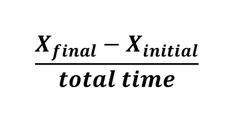
|
|
|
Average Velocity Formula |

|
|
|
Average Acceleration Formula |

|
|
|
UARM Formula (no position) |
hf |
|
|
UARM Formula (no acceleration) |

|
|
|
UARM Formula (no time) |
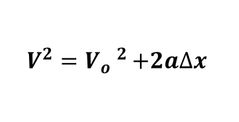
|
|
|
Free Fall Formula (no position) |
gj |
|
|
Free Fall Formula (no velocity) |

|
|
|
Free Fall Formula (no time) |
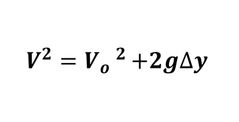
|
|
|
Free Fall Formula (no acceleration) |

|
|
|
Distance Formula of Projectile Motion (at any time) |

|
|
|
Speed Formula for Projectile Motion (at any time) |
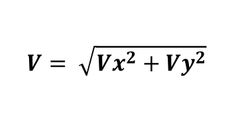
|
|
|
Second Law of Motion Formula |

|
|
|
Newton's Law of Universe Gravitation |

|
|
|
Work Formula |

|
|
|
Kinetic Energy Formula |
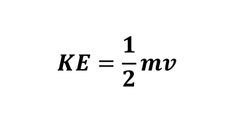
|
|
|
Work Kinetic Energy Theorem |
jf |
|
|
Power Formula |

|
|
|
Momentum Formula |
fh |
|
|
Inelastic Collision Formula |
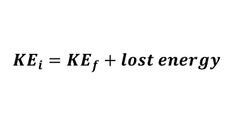
|
|
|
Solid |
state of matter that has a definite volume and shape wherein molecules are held together in specific locations by electric forces & vibrate about equilibrium positions |
|
|
Crystalline Solid |
type of solid where atoms have ordered structure
|
|
|
Amorphous Solid |
type of solid wherein atoms are arranged randomly
|
|
|
Liquid |
state of matter that has definite volume but no definite shape wherein molecules wander in a random old fashion |
|
|
Higher |
Liquids exist at __ temperature than solids
|
|
|
Intermolecular Forces |
forces that are not strong enough to keep position of liquid fixed |
|
|
Gas |
state of matter that has no definite volume and shape wherein molecules are in constant random motion and only exert weak forces on each other
|
|
|
Large |
average distance between molecules is ___ compared to size of molecules |
|
|
Plasma |
state of matter that has many electrons are freed from the nucleus resulting to collection of free electrically charged ions
|
|
|
Fluids |
state of matter that has no definite shape wherein collection of molecules that are randomly arranged and held together by weak cohesive forces |
|
|
Fluid Static |
fluid mechanics wherein fluid is at rest
consists of density & specific gravity, pressure, buoyancy |
|
|
Fluid Dynamics |
fluid mechanics involving fluids in motion |
|
|
Density |
ratio of material's mass to its volume
|
|
|
Sinking |
object's density is greater than that of water |
|
|
Floating |
object's density is less than that of water |
|
|
Fraction of Volume Submerged |
ratio of the density of the object to that of the liquid is equal to object's ____
|
|
|
Specific Gravity |
fluid static that is the ration of its density to the density of the water at 4 degree Celsius
|
|
|
Floats |
what happens to object when 0 < specific gravity < 1.00 |
|
|
Sinks |
what happens to object when specific gravity > 1.00 |
|
|
Pressure |
perpendicular force to the surface that the fluid exerts when a body is submerged in a fluid |
|
|
Large Pressure |
pressure of an object when area is small |
|
|
Small Pressure |
pressure of an object when area is large |
|
|
Pressure in Fluid |
pressure that is directly proportional to both density and depth of fluid |
|
|
Formula of Pressure |
P = pgh
|
|
|
Depth |
aspect in which pressure is dependent on |
|
|
TRUE |
pressure in any liquid at any location is exerted in equal amount in all directions |
|
|
Perpendicular |
direction to which the liquid pressure acts in respect to the side of the container as it increase with depth |

